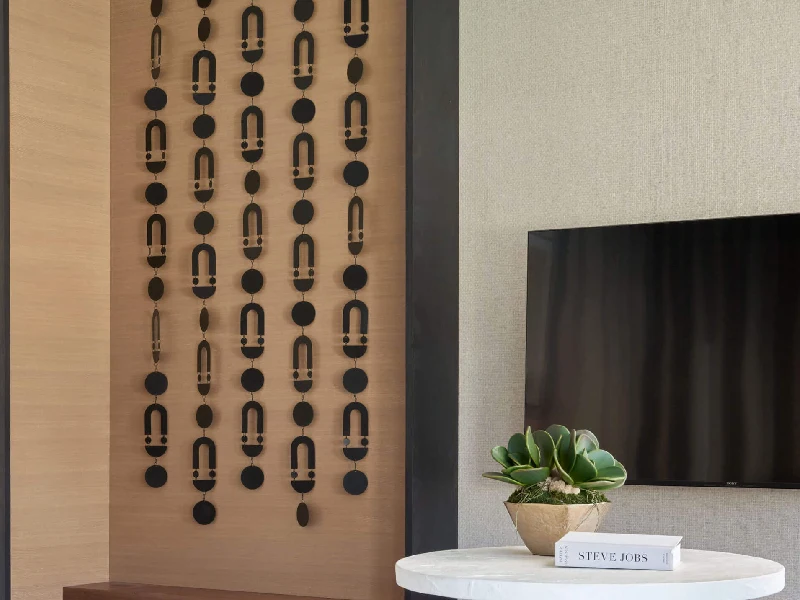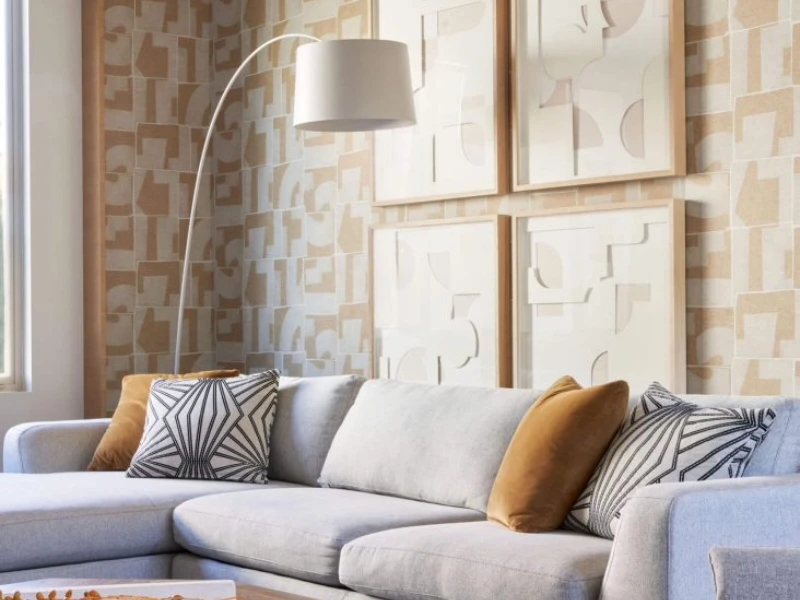Key Takeaways
- Healing by design transforms the act of rebuilding into one of renewal, not just replacement.
- Designing with natural elements, personal meaning and community context supports emotional recovery.
- Effective design in the face of loss requires collaboration, narrative continuity and intention beyond aesthetics.
Thoughtful design rebuilds more than structures—it rebuilds lives, communities, and a sense of belonging. Discover how design fosters resilience and healing after loss.
Find Renewal Through Design
Loss on a massive scale leaves a profound void. The recent fires in Los Angeles devastated more than just homes—they took away the places that define community: the neighborhood coffee shop, the boutique, and theaters where communities came together to experience art and life. When flames consume entire neighborhoods and beloved local spots, the devastation runs more profound than the loss of physical structures.
While the immediate focus of rebuilding often revolves around the basics—roofs, walls, and furniture—it’s important to remember that these spaces are more than just structures. They are the settings for our lives and profoundly influence our well-being.
Design becomes an act of renewal; it has a profound ability to help us navigate grief and process loss —It’s not just about replacing what was lost; it’s about reimagining and restoring something even more meaningful.
Healing Interior Design: A Path to Renewal
Healing design goes far beyond choosing beautiful finishes or impressive layouts. It’s about creating environments that support emotional well-being and inspire resilience. These spaces have the power to ground us, offering a sense of stability in the chaos of life.

At its heart, healing interior design is deeply personal. It understands that our surroundings shape how we feel, heal, and find joy again.
Principles of Healing Design:
- Emotional Resonance Through Personalization
Healing by design begins when spaces feel like a natural extension of their inhabitants. This means every choice—whether it’s the color of a wall, the texture of a fabric, or the curve of a chair—is made with intention. Personalized spaces create a sense of ownership and connection. - The Power of Natural Light and Materials
Sunlight has a way of lifting the spirit. Designing spaces to let in as much natural light as possible brings balance and a sense of ease while incorporating organic materials like wood, stone, and greenery helps us feel grounded and connected. - A Place for Reflection
Healing spaces must offer opportunities for stillness. Whether it’s a cozy nook, a quiet meditation room, or a serene courtyard, these areas allow us to pause and process. They become sacred spaces where we can rediscover hope and strength. - Celebrate Resilience
Healing design doesn’t shy away from loss; it acknowledges it. Salvaged materials, repurposed elements, or architectural nods to what came before celebrate the past while creating something new. These design choices remind us that beauty can rise from even the darkest moments.Healing by design is not a luxury—it’s a necessity in the journey toward emotional recovery.
Community Rebuilding: Find Connection in Design
When we lose our communities, we lose a part of ourselves. The favorite café, the beloved bookstore, the small businesses that hold stories of connection and belonging—these spaces tie us to each other. When they are lost, It’s as if the neighborhood has lost its center, its vibrancy.
But history has shown us that destruction is not the end. When Notre Dame burned, it left a gaping wound, not just in Paris, but in the hearts of millions worldwide. Yet the response was overwhelming: people came together to rebuild, donating time, resources, and artistry.
The result? A global movement rooted in hope, resilience, and collective purpose.
This is the opportunity that rebuilding offers: a chance to come together to create spaces that reflect what was lost and what we aspire to become.
Design as a Tool for Reconnection:
- Honoring the Spirit of the Past
It’s not about replicating the old but preserving its essence when rebuilding. Thoughtful design can capture the memories and soul of a place, weaving it into new spaces that feel familiar and fresh. - Creating Spaces for Gathering
Public spaces are the heart of any community. Parks, courtyards, and cafés can become places of connection and renewal, where people come together to laugh, share, and heal. - Design as a Unifying Force
The process of rebuilding itself fosters resilience. From architects to artisans, creation becomes a collective effort—a testament to the strength of a community determined to thrive.
Rebuilding after loss is not just about physical spaces—it’s about restoring the intangible threads of belonging that connect us all.
Design for Resilience
Destruction, as devastating as it is, can spark something extraordinary: the chance to start anew with more profound meaning and intention. Great design reflects resilience—it’s found in the enduring beauty of materials, how spaces can adapt to future needs, and the sense of hope they inspire.
Notre Dame was more than a cathedral—it symbolized history, faith, and human ingenuity. Its restoration became a collective story of triumph. Similarly, rebuilding homes and neighborhoods after loss is an opportunity to tell a story of hope and endurance.

The Role of Design in Resilience:
- Restoration of Identity
Resilient architecture can reflect the unique character of a place, ensuring its identity is preserved and celebrated. - Adaptable Spaces for Future Generations
Spaces that evolve with their communities ensure longevity and continued relevance. - Elevating Daily Life
Resilient design doesn’t just restore—it elevates, creating environments that inspire daily joy, peace, and connection.
Resilient architecture and design is more than rebuilding; it’s about creating spaces that heal, inspire, and bring communities back together.
Hope for Tomorrow
The fires in Los Angeles may have taken away homes, businesses, and landmarks, but they haven’t extinguished the spirit of its communities.
Community rebuilding is more than an act of recovery—it’s an act of hope, an expression of resilience, and a testament to the power of design to shape not just where we live but how we heal.
The stories of places like Notre Dame remind us that beauty can rise from ashes. They show us that even in moments of loss, there is opportunity—to create, connect, and honor the past while building a brighter future.
Loss may feel insurmountable, but design reminds us of what is possible. It gives us spaces to grieve, reflect, and ultimately thrive.
Get In Touch with IMI Design
If you’re looking to create a space that embodies resilience, healing, and thoughtful design, IMI Design is here to guide you.
Work with a luxury interior designer who understands the profound impact of intentional spaces. Learn more about Anita Lang & IMI Design and discover how we’ve transformed spaces with purpose by exploring our Interior Design Projects.
When you’re ready, contact us—together, we’ll design something that not only restores but also inspires.
FAQs
- What does “healing by design” mean in practical terms?
It means intentionally designing spaces to support emotional and psychological recovery—using light, natural materials, zones for reflection, and connection networks rather than just focusing on aesthetics.
- Why is it important to honour what was lost rather than completely erase it?
Keeping traces of what was lost (e.g., salvaged materials, architectural references) allows people and communities to retain identity, memory and continuity while moving into a new phase.
- How can natural light and materials support someone’s healing process?
Natural light helps regulate mood and physiological rhythms, while organic materials create tactile, sensory connections to nature that can ground and calm individuals, reducing stress and fostering resilience.
- Can this kind of design work for both private homes and public/community spaces?
Yes, whether a personal residence or a neighbourhood rebuilding, the same principles (connection, meaning, light, nature, community involvement) apply to foster healing across scales.
- What role do designers and architects play in post‑loss rebuilding beyond their technical duties?
They act as partners in emotional recovery: listening to the community’s story, weaving meaning into materials and spaces, coordinating with stakeholders, and shaping environments that support people’s resilience and future growth.


